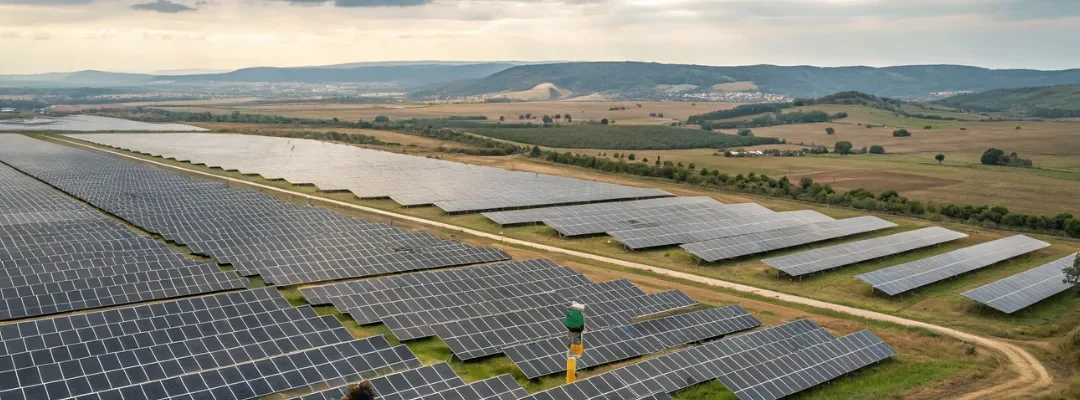Introduction
India has set an ambitious target: 500 GW of renewable energy capacity by 2030, with solar power contributing the largest share. To achieve this, the country needs massive solar parks spread across thousands of acres.
But here’s the challenge: acquiring land in India is often complex. Farmers worry about unfair deals, developers face legal hurdles, and investors fear hidden risks.
This is why transparent land aggregation is not just helpful — it is essential for achieving India’s renewable energy goals.
What is Transparent Land Aggregation?
- Land aggregation means collecting multiple small plots of land from different farmers or owners and consolidating them into a large, usable parcel for solar projects.
- Transparency means doing this process in a fair, open, and accountable way so that all parties — farmers, developers, and investors — trust the deal.
Transparency involves:
- Clear communication with farmers about price, lease terms, and benefits.
- Proper legal documentation and verified land titles.
- No hidden clauses or unfair contracts.
- Regular updates to developers and investors.
Why Transparency Matters for Renewable Energy Goals
1. Protecting Farmers’ Interests
- Farmers often fear being exploited in land deals.
- Transparent aggregation ensures they receive fair compensation or steady lease income for 20–25 years.
- This encourages more farmers to participate in solar projects.
2. Reducing Legal Disputes
- Hidden ownership issues or unclear contracts often lead to court cases.
- Transparent processes with proper verification reduce litigation.
- Developers get risk-free land and projects move faster.
3. Building Investor Confidence
- Investors want clarity and accountability before putting in money.
- Transparent land deals mean lower risk and better ROI.
- This attracts both domestic and foreign investment into solar parks.
4. Faster Project Execution
- Lack of transparency leads to delays of months or years.
- Transparent aggregation clears disputes upfront, ensuring on-time commissioning.
5. Supporting India’s 2030 Goal
- Without smooth land acquisition, solar parks cannot scale.
- Transparent aggregation ensures land is available, compliant, and dispute-free — helping India achieve its 500 GW renewable energy mission.
Example of Transparency in Action
Case 1: Gujarat Solar Park (Success with Transparency)
- Farmers were given clear lease agreements and annual rental payments.
- Developers got land free from disputes within 6 months.
- Investors funded confidently, and the project was commissioned on time.
Case 2: Non-Transparent Land Deal (Failure in Maharashtra)
- Farmers were promised lump-sum payments, but terms were unclear.
- Disputes broke out among owners → project delayed by 3 years.
- Investors pulled out, causing huge losses to developers.
The Future of Transparent Land Aggregation in India
- Digital Land Records: With land record digitization, transparency will improve further.
- Government Support: State renewable policies now emphasize farmer-friendly solar projects.
- Trust Building: Developers who use transparent models will earn better reputations, attracting more investment.

